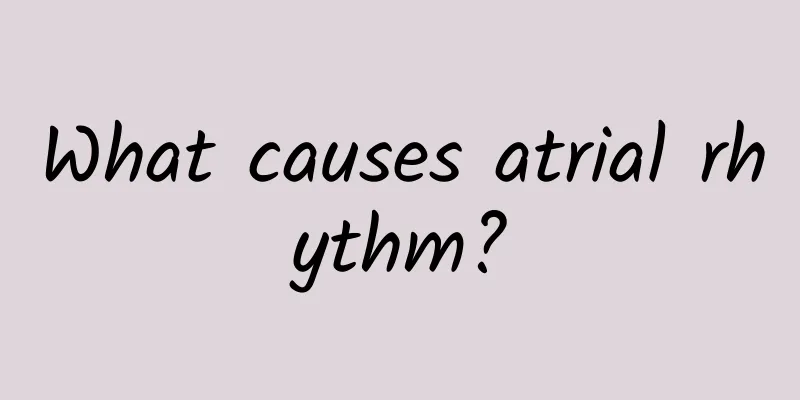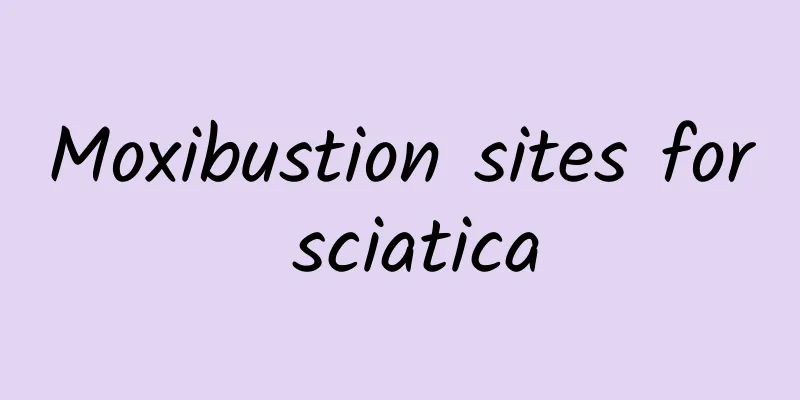What causes atrial rhythm?

|
Atrial arrhythmia is also a relatively common symptom, which often leads to tachycardia. There are many causes, such as autonomous atrial tachycardia, recurrent tachycardia, etc. Patients often show symptoms such as palpitations, shortness of breath, and rapid breathing. It is also very harmful to patients. They need to go to the hospital for examination in time and use symptomatic methods for treatment to avoid greater harm to their health. What causes atrial rhythm? 1. Autonomous atrial tachycardia is divided into chronic autonomous atrial tachycardia and acute autonomous atrial tachycardia. Primary chronic automatic atrial tachycardia is more common in infants and young children, and is often caused by congenital, genetic or anatomical factors; patients with secondary chronic automatic atrial tachycardia often have clear causes of incessant tachycardia, the most common of which are congenital or acquired heart disease, myocarditis, pericarditis, etc., or caused by drugs, scars from heart surgery (also known as incisional incessant tachycardia), and damage from radiofrequency ablation. Acute spontaneous atrial tachycardia can occur in any age group, but most often occurs in adults. It often occurs on the basis of organic heart disease, such as acute myocardial infarction, cardiomyopathy, chronic obstructive pulmonary disease (especially when accompanied by acute infection), cor pulmonale, etc. 2. The causes of reentrant tachycardia are mostly pathological. About 50% of patients with intraatrial reentrant tachycardia have organic heart disease. 3. Chaotic atrial tachycardia (also known as multifocal atrial tachycardia) can occur in both adults and children, but the two have different characteristics in terms of etiology. In adults, it is more common in seriously ill and elderly patients. The most common causes are as follows: ① chronic obstructive pulmonary disease; ② heart failure; ③ digitalis poisoning; ④ surgical operation, etc. It is more common in children due to ① immature development of the cardiac conduction system; ② viral myocarditis; ③ various congenital heart diseases, cardiomyopathy, rheumatism, etc.Clinical manifestations 1. Automatic atrial tachycardia ① The P wave morphology and atrial excitation sequence of tachycardia are different from sinus rhythm; ② Atrial stimulation cannot induce, entrain and terminate tachycardia, but (not always) can be inhibited by overspeed pacing; ③ Warm-up and cool-down phenomena may occur during the onset and termination of tachycardia; abnormal automatic atrial tachycardia; ④ Intra-atrial conduction or atrioventricular node conduction delay, even atrioventricular node conduction block does not affect the existence of tachycardia; ⑤ Stimulation of the vagus nerve and intravenous injection of adenosine cannot terminate tachycardia. 2. Reentrant atrial tachycardia ① The P wave morphology and atrial excitation sequence of tachycardia are different from those of sinus rhythm; ② Atrial programmed stimulation and graded stimulation can induce and terminate tachycardia; ③ The presence of atrioventricular node block does not affect the existence of tachycardia; ④ Some tachycardias can be terminated by vagus nerve stimulation and intravenous adenosine injection; ⑤ Atrial endocardial mapping and pacing can determine the location, excitation direction and sequence of the reentrant circuit. 3. Triggering activities cause atrial tachycardia① The P wave morphology and atrial excitation sequence of tachycardia are different from sinus rhythm; ② Atrial programmed stimulation and graded stimulation can induce tachycardia, and are independent of the delay of intra-atrial conduction and atrioventricular node conduction; ③ The pacing cycle length and the paired interval of premature stimulation are directly related to the interval of the onset of atrial tachycardia and the cycle length of the onset of tachycardia, and are characterized by stimulation cycle length dependence; ④ Before tachycardia occurs, there is an obvious delayed afterdepolarization wave on the monophasic action potential; ⑤ Atrial stimulation can terminate or overspeed the inhibition of tachycardia; ⑥ Some tachycardias can be terminated by vagus nerve stimulation and intravenous adenosine injection. |
>>: Is non-atrophic gastritis serious?
Recommend
Touching a woman can magically lower blood pressure
Traditional Chinese medicine emphasizes preventio...
Can metronidazole treat gynecological diseases?
Metronidazole is a common drug with a wide range ...
Chinese medicine nourishes the body with food to reduce internal heat
As we approach summer, there is more rain and the...
What causes breast enlargement?
Breast enlargement mainly occurs during menstruat...
What are the symptoms of fever and cramps?
If a child has fever and convulsions at the same ...
What to do if pregnant women have water beans
If a pregnant woman develops varicella during pre...
What's wrong with chest discomfort and tightness?
Some people may inadvertently feel discomfort in ...
How long does it take to rule out cerebral hemorrhage after a head bang?
In daily life, if an accident occurs and there is...
What are the dangers of high bone mineral content?
Nowadays, many people have high bone salt levels,...
Is it okay to use mineral water on face for allergies?
Nowadays, many people's faces are prone to al...
What causes acne around the lips?
Having a lot of pimples around the lips can be ve...
Lower extremity venous thrombosis
Perhaps many people have not heard of the name of...
What to do if your baby coughs
Babies who have just turned one month old have re...
How to treat viral herpes? There are methods to treat herpes
Viral herpes is a common skin disease caused by a...
How to correct bent lower legs
The backward bending of the calf is particularly ...









